Jingde style
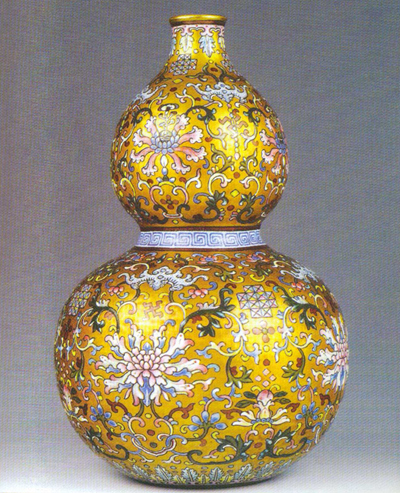
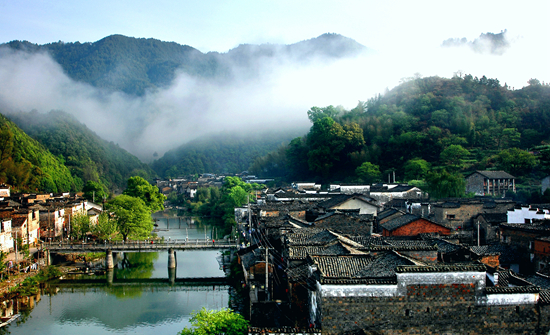
Jingdezhen city is located in a vast area about 1 billion to 1.4 billion years ago.About 100 million to 500 million years ago, Yanshan movement took place. This region rose from the sea. Since then, the geological movement has given it a high mountain and hilly landform in the northeast and low in the southwest. Rivers, mountains and rivers are densely distributed, and rich and diverse mineral deposits are gathered here. The story of Jingdezhen, the capital of porcelain, began. The place name Jingde of Yitao There are more than 40 kinds of mineral deposits in Jingdezhen, among which kaolinite and porcelain ore are the largest, with many mineral spots, which are distributed in hundreds of square kilometers. Before the Song Dynasty, the surface porcelain ore body in Jingdezhen area was a fully weathered white powder solid, in which the content of potassium, sodium and iron was low and the texture was good.The ancients living in this area built kilns and Dui factories near the water (water Dui is a tool for pounding rice by water, and it is also used to crush porcelain clay mines in Jingdezhen area). They are the first batch of porcelain makers in southern kilns who use a single porcelain clay mine to produce blue and white porcelain.During the Five Dynasties, this area has shown its advantages in raw materials. Exquisite blue and white porcelain stands out from many kilns and is widely welcomed.
The Changjiang River, which originates from Qimen, Anhui Province, has abundant water resources and two main tributaries, the East River and the South River.Changjiang provides convenient water transportation conditions for Jingdezhen. The porcelain clay, charcoal and kiln firewood in the upper reaches of the river can go down to Jingdezhen.Jingdezhen's porcelain carrier can pass through the Poyang Lake along the Changjiang River, enter the Yangtze River, and finally reach all parts of the country.
There are many kinds of porcelain clay deposits in Donghe and Nanhe river basins.The upper reaches of the Donghe River are mountainous areas with steep terrain, lush vegetation and spring streams. The large water drop provides sufficient water resources for the production of porcelain clay.It has been nearly 2000 years since the ancients used the water hammer to process the porcelain clay mine. The water hammer is a representative advanced technology of using hydraulic machinery to complete the work in ancient times, which greatly facilitates the production of porcelain clay.In the 1950s, Raymond machine gradually replaced the water hammer to crush the porcelain clay ore, but because the cost of the porcelain clay processed by the water hammer is low and the quality is good, some of the water hammer are still used up to now.In the Ming and Qing Dynasties, when porcelain industry was developed, there were more than 3000 water millstones on the river from Shundong River to Changjiang River to fenghuangzui at the mouth of the river.The clean water sources in the Donghe and Nanhe river basins also provide the conditions for washing porcelain clay.
The firing of porcelain naturally involves the participation of fire.Jingdezhen is located in the remaining vein of Huangshan Mountain, with a wide range of forest resources, with a total of 95 families and 350 species of woody plants.Among them, Pinus massoniana has high fat content, and the kiln firewood can be used to burn porcelain with its strong flame and high temperature, which is the high-quality fuel for firing porcelain.A large number of pine resources provide enough fuel for Jingdezhen to make porcelain. Before the Ming Dynasty, people could get fuel from local materials, which greatly saved freight and improved the efficiency of Jingdezhen kiln.
In the Southern Song Dynasty, sanbaopeng, the main raw material producing area of Jingdezhen porcelain, was mined out, and the local porcelain industry began to suffer from the shortage of raw materials.In the Yuan Dynasty, the porcelain workers found a kind of clay in the Gaoling mountain near Yaoli Dongbu, Jingdezhen. Its soft nature can not only be mixed with the unweathered porcelain clay under the surface of sanbaopeng to make porcelain, but also improve the stability of the porcelain body in the process of high-temperature firing. The porcelain industry has been transformed since then.Song Yingxing, a scientist of Ming Dynasty, wrote "Tiangong Kaiwu", which also recorded: "a Gaoliang mountain, out of Japonica rice soil, has a hard nature; a Kaihua mountain, out of glutinous rice soil, has a soft nature.When the two lands are combined, the porcelain is made. "
The porcelain making clay in kaolin mountain has such an effect because it contains about 35% aluminum oxide and its sintering temperature is over 1700 ℃. It can be mixed with porcelain clay and fired as aggregate (the granular material in concrete and mortar that plays the role of skeleton and filling) - so as to increase the firing temperature of porcelain (the temperature required by the sintering machine of ceramic blanks——Reporter note) range, reduce deformation and improve the degree of porcelain. The discovery of kaolin broadens the selection of raw materials for porcelain making, and the wide use of "binary formula" of kaolin and porcelain clay mixed porcelain making greatly improves the physical properties of porcelain and realizes the firing of thinner, larger and more complex porcelain.It can be said that the use of kaolin not only ended the crisis of Jingdezhen porcelain making materials in the Southern Song Dynasty, but also provided a guarantee for the development of Jingdezhen porcelain industry in the yuan, Ming and Qing Dynasties.
Jingdezhen used kaolin to make porcelain 500 years earlier than the west, which had a great influence on the ceramic industry in China and even in the world.In 1721, the French missionary, Antoine collet, who had preached to China, first revealed the existence of kaolin to the West.In 1869, German geologist Li xihuofen came to China for investigation. After his return to China, he introduced Jingdezhen kaolin porcelain in detail in his book China. Li xihuofen even created the word "kaolin" with the pronunciation of the word "kaolin", and "kaolin" gradually became the world general term of "porcelain clay". The name of Jingdezhen has its origin.In Tang Dynasty, Jingdezhen was called "Changnan town" and was a small town under the jurisdiction of Fuliang County.The porcelain produced in Changnan town is of high quality and is called "fake jade".By the Song Dynasty, there were a large number of kilns all over the country, during which fierce competition led to the emergence of a number of famous kilns, and all kinds of porcelain with unique styles appeared in front of the world. By virtue of its mature porcelain making technology and high-quality porcelain soil, Changnan town created a kind of elegant blue and white porcelain (also called shadow blue porcelain) in the early Song Dynasty.This kind of blue and white porcelain is rich in luster and exquisite, which is called "Rao jade".In addition, the porcelain quality, cost control and other aspects of blue and white porcelain have also surpassed that of Longquan kiln and Ding kiln (six kiln systems in Song Dynasty).From then on, the blue and white porcelain of Changnan town stands out and becomes a popular porcelain variety at home and abroad.At the same time, with the increasing market demand for blue and white porcelain, the ceramic manufacturing scale of Changnan town has gradually expanded, and finally formed a huge blue and white porcelain kiln system.
During the Jingde period of Song Dynasty, Zhao Heng, the third emperor of Song Dynasty, loved the porcelain produced in Changnan town very much. Therefore, song Zhenzong ordered Changnan town to make porcelain for the imperial use to pay tribute to the imperial court, and gave its year "Jingde" to Changnan town as a place name.Later, people began to call the porcelain produced in Changnan town "Jingdezhen porcelain", and Changnan town eventually changed its name to Jingdezhen, under the jurisdiction of Fuliang County.The imperial court also set up a "supervisor" in the local area, specializing in the trade and taxation of porcelain.During the Southern Song Dynasty, Jingdezhen porcelain industry continued to develop, and its blue and white porcelain products were sold everywhere.Jingdezhen is also famous at home and abroad, and has grown into an important town in the south of the Yangtze River.The unique style of Jingdezhen blue and white porcelain also affected the kilns in Jiangxi, Zhejiang, Anhui, Fujian, Guangdong and other places, thus forming a distinctive blue and white porcelain system. In the Ming Dynasty, many kilns except Jingdezhen were declining. Song Yingxing once wrote in "Tiangong Kaiwu" that "if you are of Chinese descent, famous hunters are all the products of Jingdezhen, Fuliang, Rao County."
The growth of Jingdezhen also attracts the people in Jiangxi to gather here to make a living.During the Jiajing period of the Ming Dynasty, "Jingdezhen" governed the residents of Liren, Changxiang and other cities in Fuliang County, gathered with Poyang, Yugan, Dexing, Leping, Anren, Wannian and Nanchang, Duchang and other counties where (Raozhou prefecture) belonged, and made a living as a kiln servant (Raozhou Prefecture annals).At this time, Jingdezhen's population has been "more than 100000 people are not worried about the subject and the guest" (Fuliang County annals).During the Wanli period of the Ming Dynasty, Jingdezhen has grown into the largest porcelain handicraft town in China, in which kilns are all over the town and the porcelain industry flourishes.Wang Shimao once described the prosperity of Jingdezhen in his book "the second Youwei Tan": "the sound of ten thousand pestles, the sound of yin and earth, the light of the fire, the night can't sleep.It is called "four seasons thunder town".In the late Wanli period, the town's servants were "tens of thousands of people a day" (Jiangxi general records).At that time, Jingdezhen has developed from a small town of porcelain making handicraft industry to a famous handicraft City specializing in the production and management of porcelain, and evolved from a porcelain production area to the center of the national ceramic industry. In the Qing Dynasty, the scale of Jingdezhen continued to expand on the basis of the Ming Dynasty. According to the records of Fuliang County, "the town is 20 li away from the city, but the custom is different from that of the town and the town, and the stores are subject to business, extending for 13 Li, with more than 100000 fireworks, and the number of Taohu and market stores is 78 / 10."Tang Ying, a ceramic artist in the Qing Dynasty, described Jingdezhen in his book "compilation of the cultivation map": "Jingdezhen is a town with a remote floating area, a vast area of more than ten li, surrounded by mountains and waters, and a central continent.It's the place where yuan porcelain is produced. It's a place where merchants gather.Two or three hundred districts of Minyao are facing each other with fireworks all the year round.The craftsmen and men, not less than hundreds of thousands, are not living on porcelain. "Tang Ying also commented on Jingdezhen's" dense population, bustling merchants, intricate City, various kinds of things, and several tongdudayi "(" Tao people's mind "). In the Qing Dynasty, Jingdezhen had formed a regional pattern with imperial kiln factory as the center, Li village in the East, Sanlu temple in the west, Guanyin Pavilion in the north and xiaogangzui in the south.The two main streets of Jingdezhen are parallel to Changjiang, and nearly one hundred streets and alleys are interlaced. The "lattice" alleys have also shown the basic appearance of modern Jingdezhen city.
The past and present life of Royal kiln factory
2003 When Meng Xianmin, former director of the Museum Department of the State Administration of cultural relics, inspected Jingdezhen in, he said: "the importance of Jingdezhen's ceramic cultural heritage lies not only in the extremely rich ancient porcelain products that have been unearthed and are still buried, but also, what's more, Jingdezhen still has a very large-scale, quite complete and complex ancient porcelain industry system.This huge porcelain industry system is composed of raw material producing area, traffic road, water transport wharf, workshop and kiln, commercial port and folk house, Chengchi Yayu, technical folk custom, etc. relying on natural landscape, it involves all aspects of social economy and human spirit, and can be regarded as a model of perfect combination of human and nature.The remains of ancient porcelain industry and the rich cultural heritage based on it are still unique in China and in the world. "The core of the large-scale porcelain industry system mentioned in this passage is Jingdezhen imperial kiln factory.
Jingdezhen imperial kiln factory is a place specially responsible for manufacturing imperial porcelain in Ming and Qing Dynasties. It is the largest, longest and best official porcelain factory in Chinese history.At the same time, it is also the representative of the peak period in the development history of China's porcelain industry.
The porcelain produced in Jingdezhen imperial kiln has high artistic and economic value.These exquisite and elegant porcelain masterpieces are not only recognized by the Chinese people, but also treasured by overseas collectors and major museums, and become the real world cultural treasures. It can be said that the establishment of Jingdezhen imperial kiln factory plays a key role in Jingdezhen's position as the world porcelain capital.The study of the existing imperial kiln site and its environmental background is an important basis for understanding Jingdezhen and even the whole Chinese ceramic culture and history.The porcelain pieces unearthed from the site of Jingdezhen imperial kiln are not only the important basis for experts to study Jingdezhen imperial kiln porcelain, identify and appreciate ancient ceramic products, but also the precious art remains in the thousands of years' development history of Jingdezhen, the "porcelain capital". The story of the imperial kiln starts from the Song Dynasty. At that time, the North was suffering from war and many porcelain kilns were abandoned. A large number of porcelain makers began to move south to continue to contribute to the prosperity of Jingdezhen porcelain industry.In the 16th year of the Zhiyuan Dynasty (1279 A.D.), Kublai Khan, the emperor of the Yuan Dynasty, set up the "Fuliang porcelain bureau" in Zhushan, Jingdezhen. During the next 70 years, Fuliang porcelain Bureau specially customized various kinds of porcelain for the royal family. In the Hongwu Period of the Ming Dynasty, the Imperial Court opened a royal imperial ware factory in Jingdezhen, which was renamed imperial kiln factory in the Qing Dynasty.From the second year of Hongwu in Ming Dynasty (1369 A.D.) to the overthrow of the imperial system in 1912 A.D., the royal royal royal kiln factory operated for nearly 600 years and experienced 27 emperors in two dynasties.In the past 600 years, more than 30 officials of the Ministry of internal affairs have been in charge of the management of the Royal kiln factory. During this period, the system of supervising pottery was implemented, and the official rank of the supervisor was as high as four grades. The porcelain produced in Jingdezhen imperial kiln is called official kiln porcelain. The highest quality raw materials are needed to make official kiln porcelain, and the craftsmen selected carefully are also included in the production, which can be called regardless of cost.In addition, Guan kiln porcelain is strictly forbidden to enter the folk, and in the Ming Dynasty, folk imitation is strictly prohibited, and offenders will be punished. Compared with the traditional porcelain, the official porcelain has great advantages in quality and workmanship.Guanyao porcelain represents the highest attainments of ceramic art and production technology of Ming and Qing Dynasties, and it became the peak product of porcelain manufacturing at that time.Jingdezhen official kiln porcelain with high collection value and appreciation value also occupies a special position in the world ceramic development history. In the western world, "China" refers to "China".
The excavation of the site of Jingdezhen imperial kiln factory is full of twists and turns.There are many ancient kilns in Zhushan area of Jingdezhen in Ming and Qing Dynasties.But with the passage of hundreds of years, the buildings above the ground have disappeared.The modern Zhushan district has become the center of Jingdezhen's people's life, and the ruins of the former imperial kiln factory are hidden in the streets of this residential area.The site of the imperial kiln and the specific location of the buried treasures were once a mystery.After the founding of the people's Republic of China, archaeologists never stopped discussing and looking for the exact location of the site of Jingdezhen imperial kiln. However, it was not found until the early 1980s.
1982 One day in, workers working on the street near Zhushan middle road found hundreds of pieces of porcelain fragments in the excavated soil.After identification by local cultural relics experts, these pieces of porcelain mixed in the soil are all royal porcelain produced in Xuande period of Ming Dynasty.Since then, the archaeological excavation of Jingdezhen imperial kiln site has officially opened the curtain.However, restricted by the dense buildings on the ground in Jingdezhen, the later archaeological excavation work has not been carried out rapidly, and the real orientation of Jingdezhen imperial kiln is still covered with a layer of mystery.
1987 In the summer of, the Longzhu Pavilion in Jingdezhen was rebuilt. When the workers digging the foundation reached about 4 meters underground, tens of thousands of pieces of broken porcelain piled together again.After identification, these pieces of porcelain were imperial porcelain in Ming Dynasty.The discovery shocked the whole Chinese ceramic archaeology, and the mystery of the imperial kiln began to be solved slowly.
1994 On July 27, 2002, archaeologists found fragments of a large bowl of red flowers in the glaze in the early Ming Dynasty at a residential reconstruction site near Longzhu Pavilion.The discovery finally determined the center of Guyu kiln, which is located between longzhuge and the municipal government compound, with a total area of aboutFive point oneTen thousand square meters.In October 2000, with the approval of the State Administration of cultural relics, a team of experts from the Chinese Archaeological Research Institute and Jingdezhen Ceramic Museum jointly organized to protect and excavate the Yuyao site in Zhushan.
2002 At the end of the year, Jingdezhen government's doorplate, which had been hung for decades, disappeared, and vehicles carrying goods began to move in and out frequently.In order to facilitate the excavation and protection of the site of the imperial kiln factory located under the government compound, Jingdezhen Municipal government office and other 18 government departments moved out of the place where people had been searching for "buried treasure" for a long time.
2003 In, the imperial kiln site of Ming and Qing Dynasties in Jingdezhen was initially excavated and restored, including 11 official kilns.It is rated as the top ten archaeological discoveries in 2003, which has attracted wide attention of ceramic archaeologists at home and abroad.In 2006, Yuyao site was announced as a national key cultural relics protection unit by the State Council, and officially opened to the public in October 2007.At this point, the mysterious Jingdezhen ancient imperial kiln factory is finally displayed in front of the world.
2015 In March 2002, Jingdezhen officially launched the declaration of world cultural heritage with the imperial kiln site as the core.In January 2017, the site of Jingdezhen Yuyao factory was approved by the State Administration of cultural relics to be included in the preliminary list of China's world cultural heritage, and the site of Jingdezhen Yuyao factory received the "admission ticket" for applying for the world heritage. When intangible cultural heritage protection is in progress
2003 On October 17, 2010, UNESCO passed the Convention on the protection of intangible cultural heritage, officially naming and publishing five basic contents of the protection of intangible cultural heritage, including "traditional handicraft".
2006 In, China's first batch of national intangible cultural heritage list was officially released, and "Jingdezhen manual porcelain technology" was listed as "traditional manual technology".In the same year, the general survey, registration, application and selection of intangible cultural heritage in Jingdezhen were carried out in an all-round way.As of March 2014, Jingdezhen has applied for, selected and registered 49 intangible cultural heritage projects at or above the municipal level, including two national intangible cultural heritages of "Jingdezhen manual porcelain making technology" and "traditional kiln workshop building technology"; 22 provincial intangible cultural heritages, eight of which are related to ceramic handicraft, such as "Jingdezhen traditional blue and white porcelain making technology"There are 25 municipal intangible cultural heritages, 15 of which are related to ceramic handicrafts and cultural customs, including "Jingdezhen traditional ceramic raw material processing and preparation technology", "Jingdezhen traditional thin body porcelain production technology", "Jingdezhen traditional red glaze porcelain firing technology"Art "," Jingdezhen traditional shadow celadon firing technology "," Jingdezhen Ceramic musical instrument making technology "," Jingdezhen mid autumn burning Taiping kiln festival custom "," Jingdezhen porcelain worship custom "," Jingdezhen traditional porcelain language vocabulary ", etc.
The national intangible cultural heritage "Jingdezhen hand-made porcelain technology" is the representative of the intangible cultural heritage of Jingdezhen Ceramic hand-made technology.In the Song Dynasty, the important process of Jingdezhen's hand-made porcelain technology had taken shape, and the division of labor in the porcelain making process was gradually refined.
The production of ceramic body mainly adopts the techniques of drawing, printing, benefiting, mending, dipping and swinging glaze, and then adopts the techniques of saggar overhead firing, underlaying and covering firing, support ring covering firing and so on.In the Yuan Dynasty, the "binary formula" using the mixture of kaolin and porcelain clay ore and the technique of blue and white underglaze painting were invented.In the Ming and Qing Dynasties, the craft system of Jingdezhen's hand-made porcelain was basically perfect, "a total of one piece of strength, 72 hands, square gram into a device.Among them, there are not enough micro programs "(" Tiangong Kaiwu "). Every process of porcelain making has been clearly subdivided, with a high degree of specialization, and the efficiency of porcelain making has been improved.
Speaking of this, we need to mention the five core processes of Jingdezhen's hand-made porcelain technology, which are: drawing blank, benefiting blank, drawing blank, applying glaze and firing kiln. Drawing blank, also known as "making blank", is the rudiment of making utensils. It uses the wheel forming technology to make the required shape and suitable size of the mud material placed on the blank car.
Liban, also known as "trimming", is to process rough blanks with different thickness specifications after the blank printing link (the blank body of the ceramic artifacts required by the mold printing - reporter's note) through the rotary cutting technique, so as to make the thickness appropriate and consistent inside and outside. Glaze application, that is, through pouring, dipping, painting, swinging, blowing and other methods, a layer of glass glaze is applied inside and outside the body of the utensil, so as to make the body smooth and moist.
Painting blank, that is to use blue and white pigment to paint or write on the blank, also known as "painting blue and white". The kiln is to place the casserole containing the blank on the kiln bed, burn the pine wood or chachai wood to 1270-1300 ℃, use the method of combining oxidation flame and reduction flame to burn for 24 hours, and finally burn the blank body in the casserole into porcelain body. In Jingdezhen's imperial kiln factory with complete division of labor, each link of porcelain production has its own workshop.Due to the different division of labor, the porcelain craftsmen all have their own special skills and take them as their industries.This not only ensures the professional level of porcelain making technology, but also provides the possibility for the innovation and development of porcelain making technology. Jingdezhen hand-made porcelain technology and production system is a great achievement in China's ceramic industry.However, with the development and transformation of the mechanized production of porcelain industry, Jingdezhen porcelain industry began to decline or even close to extinction. Many of Jingdezhen's traditional hand-made porcelain skills are continuing to drain, which needs to be rescued and protected. In addition to the intangible cultural heritage of handicrafts, "Jingdezhen porcelain industry custom" is also an important part of Jingdezhen intangible cultural heritage.Jingdezhen porcelain industry custom and Jingdezhen porcelain making history go hand in hand.Jingdezhen porcelain production started in Five Dynasties, and Jingdezhen porcelain industry custom was born at that time.By the Song Dynasty, Jingdezhen porcelain industry had developed to a certain scale, and the rudiments of porcelain industry customs were formed.The binary matching method invented in Yuan Dynasty not only accelerated the development of Jingdezhen porcelain industry, but also enriched the customs of Jingdezhen porcelain industry.During the Ming Dynasty, due to the establishment of Royal kilns and the expansion of overseas market, many small porcelain workshops scattered in the countryside gradually concentrated in the urban area of Jingdezhen, and then formed a handicraft industry workshop with a large number of labor force. Jingdezhen became a ceramic metropolis with complex staff composition, which also laid a foundation for the final formation of Jingdezhen porcelain industry custom. In the Qing Dynasty, the imperial kiln factory continued to be set up in Jingdezhen, and the management system of "burning by officials and people" was established.At the same time, various convention halls have emerged, and various rules have emerged.During the Mid Autumn Festival, the custom of burning "Taiping kiln" and the custom of sacrificing to porcelain industry prevailed, and the custom culture system of Jingdezhen porcelain industry was formed. During the period of the Republic of China, the continuous growth of the ranks of the porcelain merchants of the Hakka nationality and the emergence of a large number of porcelain houses, porcelain houses and porcelain names were the main manifestations of the customs and culture of Jingdezhen porcelain industry at that time.Local business groups with porcelain houses, porcelain houses or porcelain names contact and communicate with other places, and actually control the marketing of Jingdezhen porcelain. The cultural and folk customs brought by these business groups also add rich connotations to the customs of Jingdezhen porcelain industry. At present, the protection of the intangible cultural heritage of Jingdezhen ceramic handicrafts and cultural customs is continuing.In 2019, Jingdezhen Ceramic University, Jingdezhen celadon Art Research Institute and other units were selected into the list of intangible cultural heritage research bases in Jiangxi Province in 2019-2021, and Jiangxi ceramic arts and Crafts Vocational Technology College was selected into the list of intangible cultural heritage heritage heritage bases in Jiangxi Province in 2019-2021.In addition, many ceramic enterprises in Jingdezhen city have also been selected into the list of Jiangxi intangible cultural heritage production protection demonstration bases in 2019-2021.By 2019, there are 10 national intangible cultural heritage representatives, 68 provincial intangible cultural heritage representatives and 393 municipal intangible cultural heritage representatives in Jingdezhen.
[ Editor: WPY ]





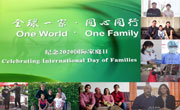

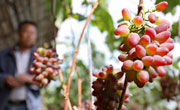
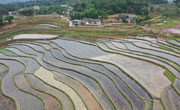
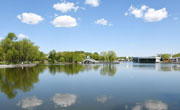
More From Guangming Online
Medics from Fujian leave for Shanghai to aid in battle against COVID-19 resurgence
New int'l land-sea transport service to Indo-China Peninsula launched
Another makeshift hospital under construction in Shanghai
Tourists view tulips in Suiping County, Henan
In pics: blooming gagea flowers on grassland in Zhaosu, Xinjiang
Greek workers stage 24-hour general strike over high prices